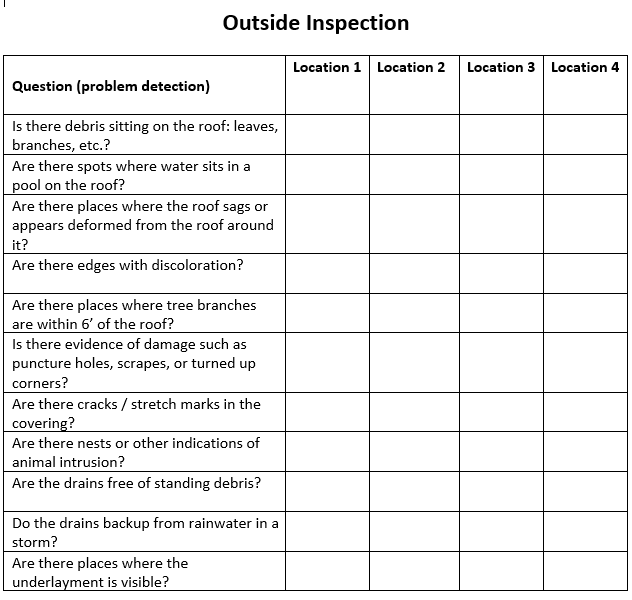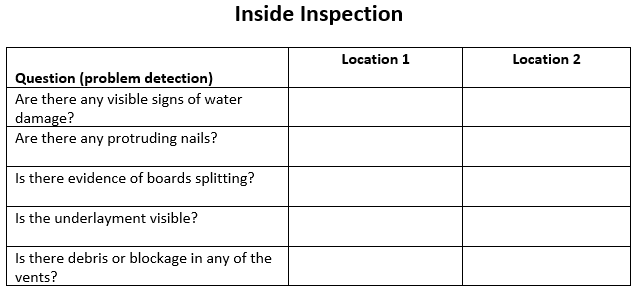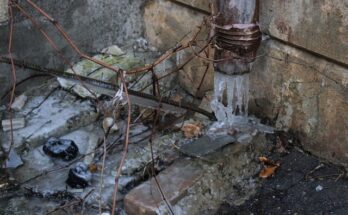Your roof is the most important investment in your house. A poorly maintained roof hurts the resale value and ultimately leads to damage throughout the property.
Often, homeowners are encouraged to do a visual inspection of their roof to determine if there are any problems. But the average homeowner is not a roofer.
What is it you are inspecting for?
What are problem areas you should be concerned about?
What does a healthy roof look like?
Use this handy checklist to guide you through a visual inspection of your roof to determine if your roof is healthy, if it needs a professional inspection, or if it might need to be replaced.
Use the grid below to record your answers. The columns are provided to help you record observations from several different places around your house with a good view of the roof. For the outside inspection, you may choose up to four places to get a good report on your whole roof.
For the inside report, you might choose just one: your attic, though space is given to address a second location, such as a separate gable or portion of the house.


After If you have completed your visual inspection, take a look at the answers. Anything for which you answered yes requires a second, closer look.
For example, if you see what appears to be a scrape on your roof, you should take a closer look. From the ground it may appear to be a scratch, but is could in fact merely be a stain from a branch or tree frond that sat in that space and decomposed.
Alternatively, a scratch could be a deep wound from a falling limb that is allowing moisture under your roof and causing permanent damage.
Likewise, one of the inside trouble points is the presence of protruding nails. In some cases, this is a problem. However, in many unfinished ceilings, this is just how the construction occurred, and the long nails, protected from water by the shingles above them, are doing exactly what they are supposed to be doing.
However, it is better to be safe than sorry when it comes to protecting your roof.



